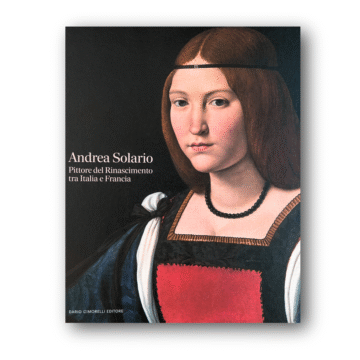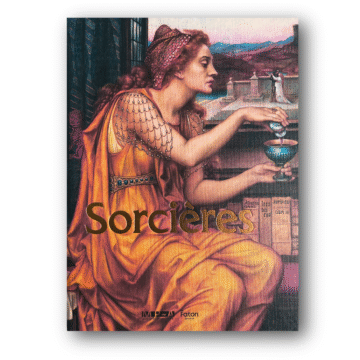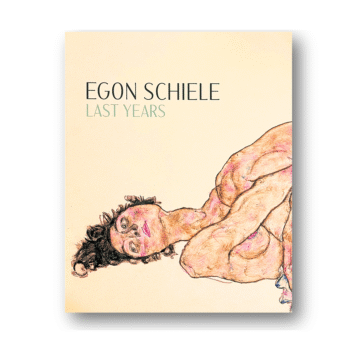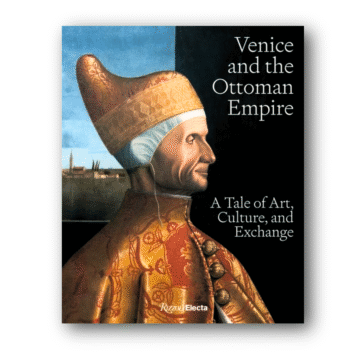Witches, Goya, and Apple Pie: A June Art Guide
June is a lazy month, and museums are not immune to the seasonal nap. Many blockbuster shows are either wrapping up or biding their time until autumn. Meanwhile, curators ease into summer mode, luring in tourists with selections from their permanent collections, light programming, and air-conditioned halls.
But we found the cherries in the gelato. From an electrifying rediscovery of Spanish mystic painter Néstor to the haunting double-Saturn installation in Madrid, from actual dessert scents wafting through The Hague to witches reclaiming their image in Pont-Aven — this month has a little something for everyone who still believes that art can surprise.
This roundup spans European paintings, colonial-era gems of Asian art, and everything in between, including postal workers, Pre-Raphaelites, and Lady Gaga.
So, grab your sun hat, museum pass, and a good dose of curiosity. Let’s wander.
EUROPEAN EXHIBITIONS
SPAIN
Néstor Reencontrado /Néstor Rediscovered
Museo Reina Sofía, Madrid. 14 May – 8 September 2025
A thunderous round of applause, please — we have a revelation on our hands. This summer, Madrid’s Reina Sofía Museum unveils an electrifying rediscovery: Néstor Martín-Fernández de la Torre, or simply Néstor, a name that deserves to be shouted from the bell towers of every art school in Europe.
This is the first large-scale retrospective dedicated to the Canarian artist, and it pulls no punches. Nearly 200 works, many from private collections, converge in a theatrical explosion of color, fantasy, and symbolic excess. It is like someone tossed symbolism, Art Nouveau, Masonic mysticism, homoeroticism, Baroque drama, and a pinch of island folklore into a blender and hit “divine chaos.”
Néstor’s world is populated with glowing nudes, enormous fish, voluptuous flowers, and mythic allegories that pulse with a wild sensuality and a metaphysical wink. A central highlight is his monumental series Poema del Atlántico and Poema de la Tierra — lush visual symphonies that flirt with the sacred and the surreal.
Born in Las Palmas in 1887 and largely forgotten after his death in 1938, Néstor is finally having his overdue moment in the spotlight. And let us tell you: it is a full-on technicolor resurrection.
Don’t walk. Run.
Paolo Veronese
Museo del Prado, Madrid. 27 May – 21 September 2025
Why did kings and collectors adore Veronese?
Because no one else could stage a divine drama quite like him. Whether painting biblical feasts or mythological entanglements, Paolo Veronese (1528–1588) brought a sense of grandeur, elegance, and irresistible theatricality to every canvas.
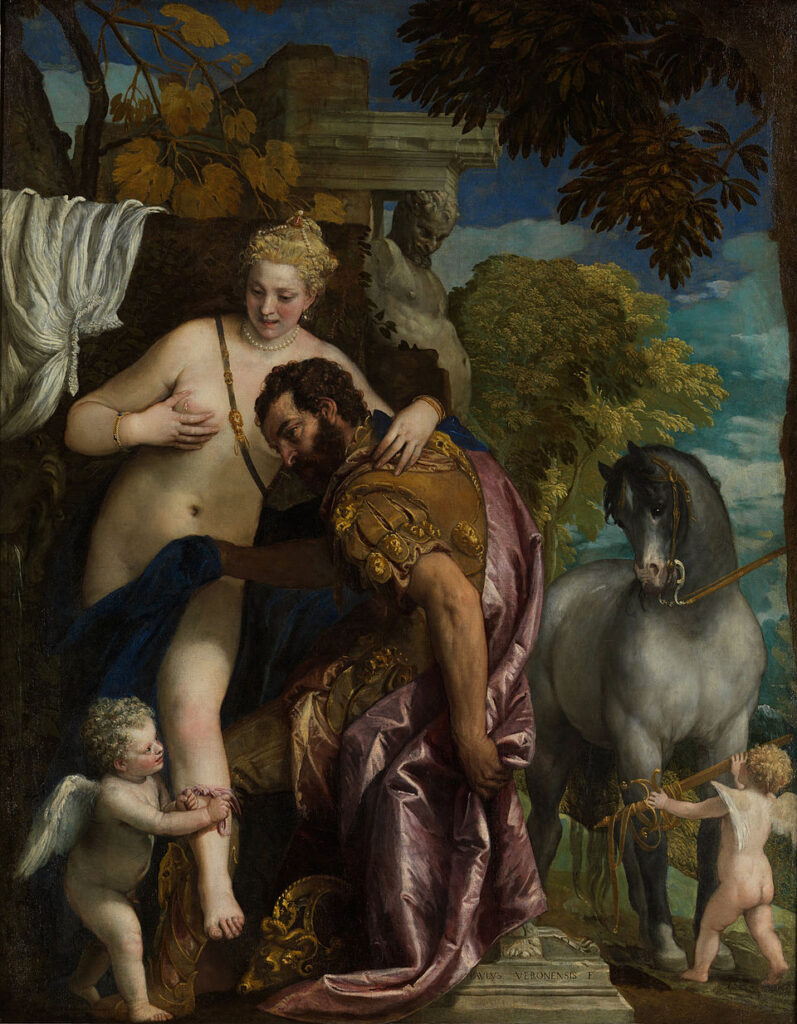
This landmark exhibition at the Prado brings together works from prestigious institutions such as the Louvre, The Metropolitan Museum of Art, the National Gallery in London, the Uffizi, and the Kunsthistorisches Museum in Vienna, alongside key holdings from the Prado. It is a sweeping survey that showcases Veronese’s astonishing range — from devotional masterpieces to majestic portraits and courtly pageantries.
And yes, we confess: we have a soft spot for his mythological tableaus, particularly those scenes drenched in allegory and classical fantasy. These were the genres especially beloved by social elites, and Veronese excelled in them like no other. In fact, his flair for the mythological made him the only artist capable of truly competing with Titian — a feat that earned him powerful patrons both in and beyond Venice.
So whether it is gods tangled in silk, horses mid-prance, or cherubs mid-flirt, Veronese’s glittering operatic fever dreams remain among the most thrilling spectacles of Renaissance art.
This show is a rare treat for lovers of color, composition, and Renaissance swagger.
Reunion, Five Years Later
Museo del Prado, Madrid. 6 June – 6 July 2025
If you are at the Prado for Veronese, do not leave without stepping into this powerful side exhibition that marks a historic moment in the museum’s recent past.
In June 2020, after 87 days of pandemic shutdown, the Prado reopened with a hauntingly beautiful installation titled Reencuentro (Reunion). Just one-eighth of the museum was used, but within that space, 200 of the Prado’s most iconic works were brought into electrifying proximity.
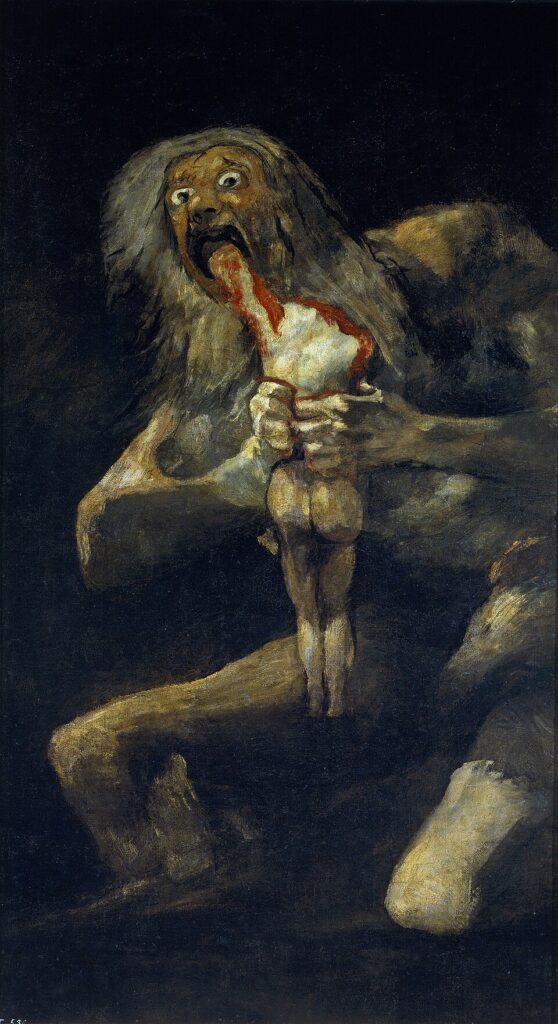

Among the most unforgettable moments?
The face-off between Saturns, one by Rubens, one by Goya, was brought together in the same room for the first time. It was a chilling, mythic, and masterful pairing that stunned viewers then, and it is back again for a limited time.
This special installation commemorates that once-in-a-lifetime moment. A visual echo of resilience, intimacy, and high art at its most cathartic.
FRANCE
Sorcières (1860–1920). Fantasmes, savoirs, liberté / Witches (1860–1920): Fantasies, Knowledge, Freedom
Musée de Pont-Aven (in partnership with Musée d’Orsay). 7 June – 16 November 2025
Double, double toil and trouble… but make it art.
In Pont-Aven this summer, witches are flying straight into the museum spotlight — seductive, rebellious, fearsome, and wise. This extraordinary exhibition reclaims the witch as one of the most charged and changeable symbols in European art: from demonic temptress to misunderstood healer, from social outcast to feminist icon.
With works ranging from the Romantic era through the early 20th century, Sorcières explores how visual culture mirrored, and helped shape, the fears, fantasies, and fascinations around women who defied social norms. Think crones, sirens, poisoners, and visionaries. Some are drawn with terror, others with admiration. All are potent.
The show’s title — Fantasmes, savoirs, liberté — says it all: this is a story of projections, of knowledge both mystical and scientific, and of women grasping for freedom in a world that tried to bind them.
A highlight of the show? The exhibition does not shy away from the tensions: between seduction and stigma, between natural magic and institutional oppression, between horror and awe. By the late 19th century, artists and writers began to recast the witch, not as a menace, but as a mirror of society’s own anxieties about sex, knowledge, and female power.
Sourced from major collections, including contributions from the Musée d’Orsay, this is no mere cauldron of clichés. It is a serious, provocative journey into the cultural afterlife of one of art history’s most compelling figures.
Ready to meet the women who refused to disappear quietly?
Les Très Riches Heures du Duc de Berry / The Très Riches Heures of the Duke of Berry
⭐Our Favorite
Château de Chantilly. 7 June – 5 October 2025

Incredibly, this is happening in our lifetime: the most famous illuminated manuscript in the history of art, which has only been exhibited to the public twice in the last 200 years, is now on display. This summer, Château de Chantilly (just an hour from Paris) offers that rare moment and elevates it to an experience of mythic proportions.
“Les Très Riches Heures du Duc de Berry” (The Very Rich Hours of the Duke of Berry), illuminated by the legendary Limbourg brothers around 1412–1416, is more than a manuscript. It is a portal into the soul of late medieval Europe. Lavishly illustrated with gold, lapis lazuli, and ultramarine, this jewel of Gothic illumination brings to life not only the prayers and devotions of a pious duke but also the rhythms, labors, and luxuries of 15th-century aristocratic life.
To mark the occasion of a recent restoration, the first twelve calendar pages from the “Seasons” cycle are now on display individually, right next to the manuscript itself. Reproductions of these iconic miniatures, showing peasants at work and nobility at leisure against dreamy castle backdrops, have become familiar to nearly everyone. But seeing the originals? That is practically impossible. Until now.
The book itself is shown open to a different page every two weeks, making each visit a one-of-a-kind encounter with history.
This exhibition is the most important ever dedicated to the masterpiece. It brings together over 200 works from the château’s own holdings and major international collections, including manuscripts, panel paintings, and objets d’art, to explore the artistic, political, and devotional worlds that shaped the Limbourgs’ astonishing creation.
The exhibition is organized around the three key patrons of the Limbourg brothers — Philip the Bold, Jean de Berry, and the Duke of Burgundy, as well as the artists’ working methods, iconographic innovations, and tragic early deaths (they all died young, likely from plague).
The centerpiece, of course, is the month-by-month calendar miniatures, which continue to astonish with their blend of rich symbolism and startling naturalism. Farmers sow seeds, nobles feast, and snow falls. It is a full visual symphony of medieval life — precise, poetic, and strangely timeless.
For anyone who has ever lost themselves in the magic of a manuscript, this is not just an exhibition; it is a pilgrimage.
ITALY
Andrea Solario: La seduzione del colore / The Seduction of Color
Museo Poldi Pezzoli, Milan. Until 30 June 2025
One of the most underrated yet exquisitely refined painters of the Italian Renaissance is finally getting his moment in the spotlight.
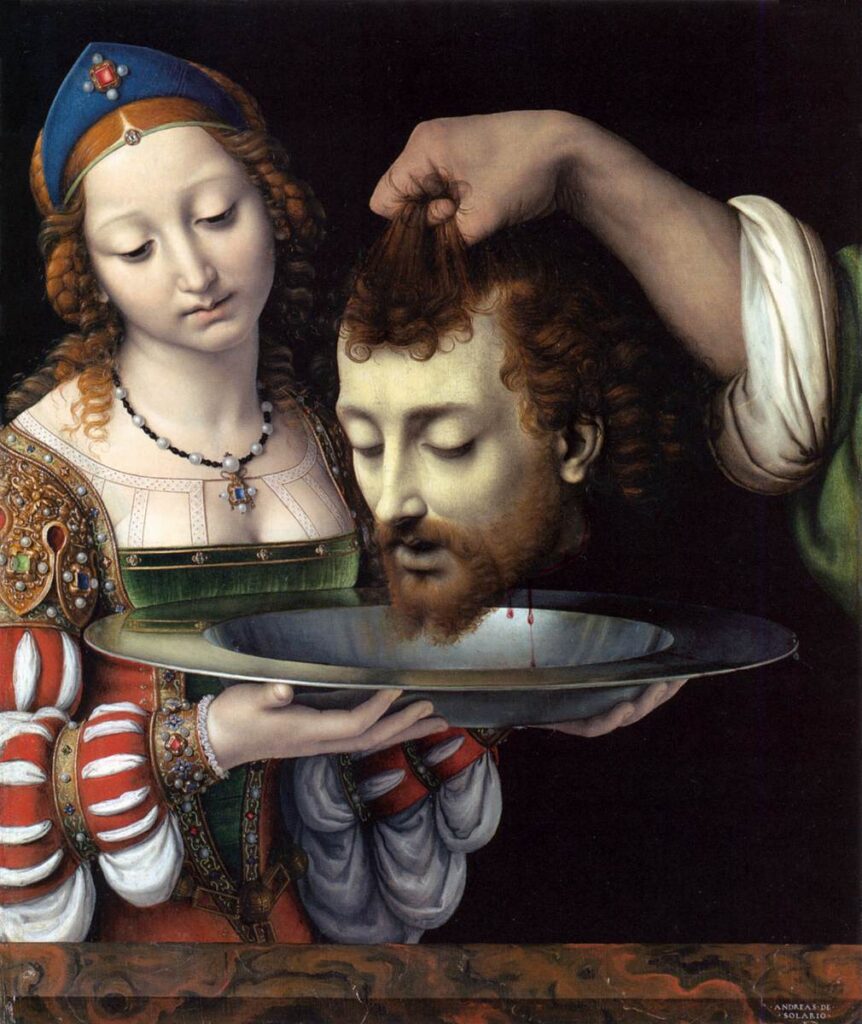
Andrea Solario, a Milanese painter active in the late 15th and early 16th centuries, lived and worked in the shadow of giants, but left behind a quietly dazzling legacy. His style fuses the precision of Northern European realism with the soft sfumato of his Lombard contemporaries, creating portraits and devotional scenes that feel both intimate and sublime.
This long-overdue exhibition brings together masterpieces from Italian and international collections, celebrating Solario’s contributions to Renaissance art and his delicate handling of color, light, and human emotion.
Whether painting a serene Madonna or a nobleman with a piercing gaze, Solario offers a masterclass in restraint and detail.
And there is one more unexpected twist: an avant-garde intervention by American stage director Robert Wilson, featuring a hypnotic video of Lady Gaga. The installation reimagines Solario’s haunting Head of Saint John the Baptist through layered projections and dramatic lighting. It is surreal, theatrical, and oddly tender — a meeting of Renaissance stillness and contemporary spectacle.
A must-see for lovers of Old Masters and bold artistic mashups.
Florence and Europe: The Arts in the 18th Century
Gallerie degli Uffizi, Florence. 28 May – 28 November 2025
Skipping Florence while in Italy? That should be illegal. And if you are in Florence and somehow avoid the Uffizi, you are denying yourself a genuine art-induced catharsis.
This exhibition dives deep into the nuanced and multilayered art scene of 18th-century Florence, a period marking the end of Medici rule and the beginning of Habsburg influence. It is a captivating blend of emotional Italian flair and cold Alpine rationalism.
You will encounter masterpieces by Liotard, Canaletto, Élisabeth Vigée Le Brun, Goya, Tiepolo, and more. Look out for Giovanni Gherardini’s Portrait of the Chinese Emperor Kangxi and its fascinating backstory, as well as Enlightenment-era obsessions like erotic antiquities and Grand Tour vistas of iconic Italian landmarks.

One of the show’s highlights is a chance to witness, live, the ongoing restoration of a recent Uffizi acquisition: Pierre Subleyras’s Mystic Marriage of Saint Catherine de Ricci — a painting hailed as a masterwork of the 18th century.
For anyone interested in the lesser-sung moments of European art history, this is a gem of a show, and a reminder that even in centuries of supposed decline, Florence never stopped making beauty.
The NETHERLANDS
Grand Dessert: The History of Dessert
Kunstmuseum Den Haag. Extended through 26 October 2025
What comes to mind when you hear “The Hague”? War tribunals, probably. But after this exhibition, prepare for your brain to be hijacked by vanilla and powdered sugar.
With hundreds of objects, from antique cookbooks and porcelain molds to paintings, tableware, and tantalizing scent diffusers, this show is a full-sensory journey through Europe’s dessert history, from 1600 to today. It is smart, sweet, and surprisingly profound.
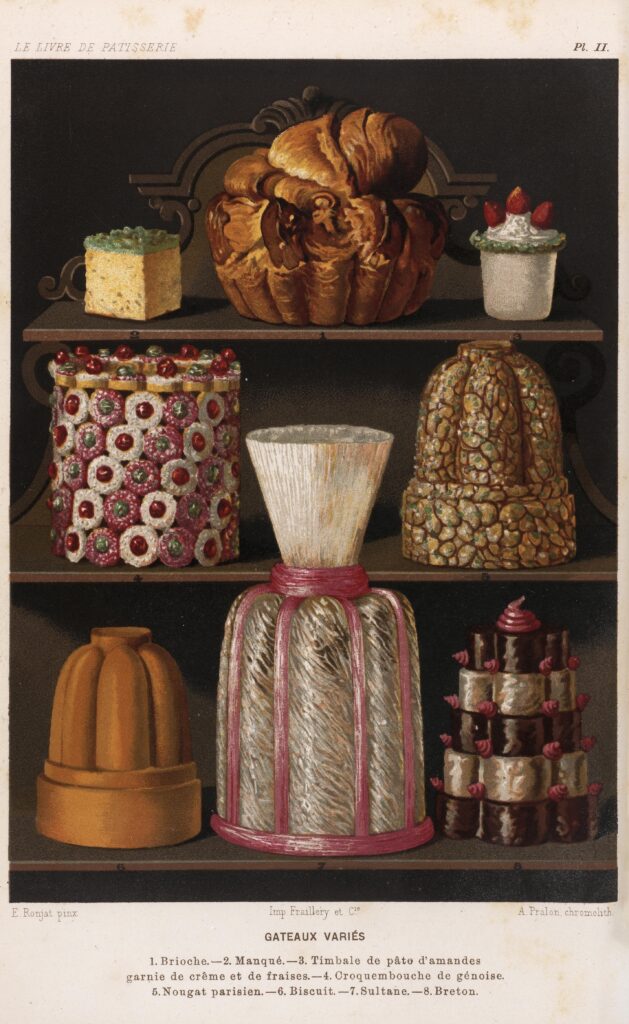
You will learn that desserts were once the domain of the elite, that the word itself comes from the French desservir (“to clear the table”), and that confectionery predated porcelain.
The exhibition is infused with aromas like apple pie and baklava, designed to haunt you every time someone mentions The Hague. The Kunstmuseum’s own rich collection is complemented by treasures from other Dutch museums, castles, private collectors, and contemporary artists.
Yes, it is about dessert. But it is also about history, craftsmanship, indulgence, and identity. A delightfully layered show that is as educational as it is mouthwatering.
AUSTRIA
Changing Times: Egon Schiele’s Last Years
Leopold Museum, Vienna. Until 13 July 2025
After desserts, it is time for something darker — because life is not all vanilla and meringue.
Egon Schiele (1890–1918), enfant terrible of Austrian modernism, lived fast and painted faster. But the final years of his life, marked by personal upheaval, war, and impending tragedy, reveal an unexpected shift in tone.
This major monographic exhibition, the first ever to focus solely on Schiele’s works from 1914 until his premature death in October 1918, brings together around 130 pieces from museums and private collections across the globe. It intertwines the personal and the artistic, shedding new light on this turbulent chapter of the artist’s life.
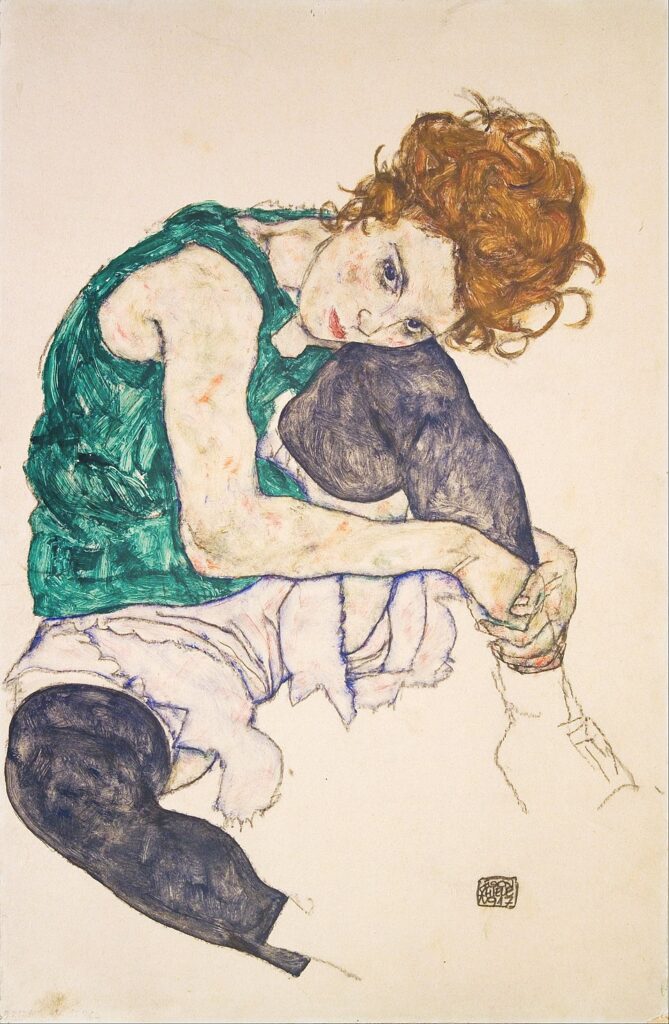
We see Schiele softened: his palette warmer, his figures more tender, his vision more grounded in empathy. And yet, the shadows of mortality and trauma never fade entirely.
The exhibition includes newly discovered archival materials, most notably the previously unpublished diary of Edith Schiele, Egon’s wife, who died just days before him during the Spanish flu pandemic. Their love, their art, and their end form the haunting heart of this powerful show.
An unforgettable encounter with one of art history’s brightest and briefest flames
The UNITED KINGDOM
Yoshitomo Nara
Hayward Gallery, London. 10 June – 31 August 2025
Eyes wide shut. That is the phrase that comes to mind when stepping into the world of Yoshitomo Nara, and not just because of the film. His painted children stare back at us with giant, haunting eyes that seem to say: “I see everything, even when I’m not looking.”
The Hayward Gallery’s summer blockbuster brings the largest UK exhibition of the iconic Japanese artist. His trademark blend of innocence and defiance, pastel colors, and punk spirit, is all here, but there is more. The show also dives into his drawings, sculptures, installations, and lesser-known early works, giving us a full picture of an artist who wears contradiction like a badge of honor.
What looks cute from a distance turns emotionally charged up close. Nara’s characters are lonely rebels, born of postwar angst and personal reverie. This is quiet rage with a soft palette, a whisper that still stings.
The deeper you go, the more you realize: these are not just portraits. They are psychological mirrors
Wellington’s Dutch Masterpieces
Apsley House, London. 2 April – Christmas 2025
What do the Battle of Waterloo and a perfect still life have in common? The answer: the 1st Duke of Wellington.
Best known as Napoleon’s nemesis, Arthur Wellesley also happened to be a connoisseur of extraordinary taste. During his years in service and diplomacy, he amassed a private art collection worthy of royalty, and Apsley House, his former residence at Hyde Park Corner, became its gilded stage.
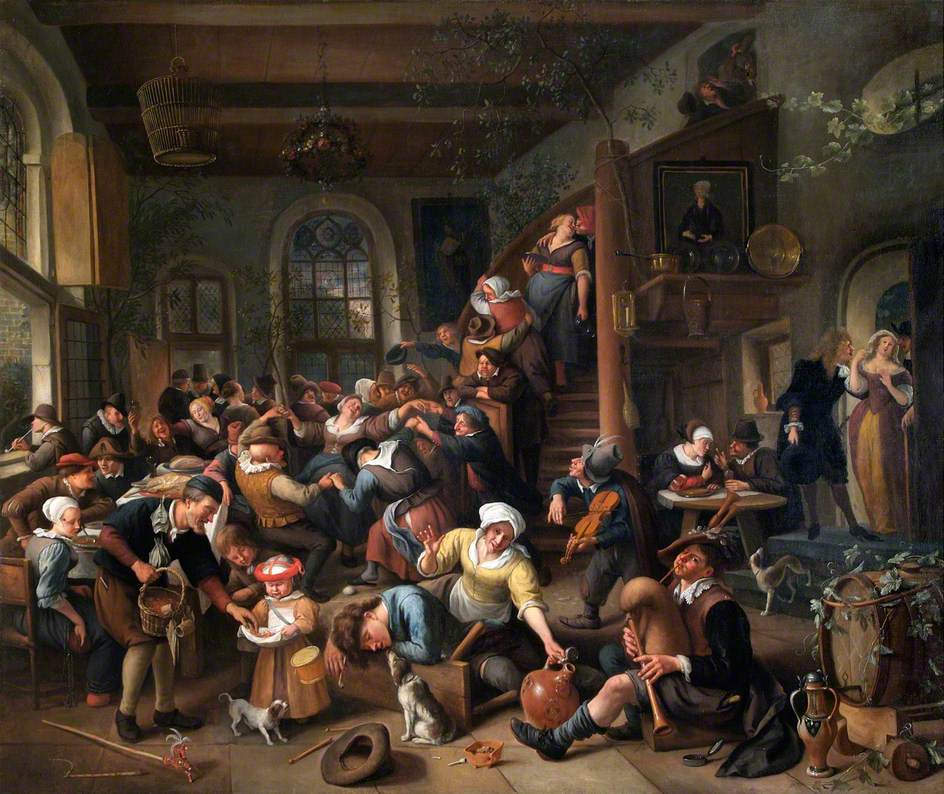
This summer, the spotlight turns to the Dutch Golden Age gems in his collection: works by Rubens, van Dyck, and Jan Steen, alongside lesser-known but no less dazzling talents. You will find genre scenes full of sly humor, tender domestic portraits, and lavish banquet tables rendered in obsessive detail.
The show offers not just a feast for the eyes, but also a glimpse into the personal tastes of one of Britain’s greatest military minds — a man who could command armies and curate masterpieces with equal flair.
An elegant, quietly revealing exhibition in one of London’s most historic homes.
ASIAN EXHIBITION
INDIA
A Treasure of Life: Indian Company Paintings, 1790–1835
DAG Art Gallery, New Delhi. 12 April – 5 July 2025
There is something quietly radical about this show.
Tucked away from the noise of biennales and mega-retrospectives, DAG’s exhibition in New Delhi invites us into the world of Indian Company paintings: works created by local artists under the patronage of British East India Company officials during the late 18th and early 19th centuries.
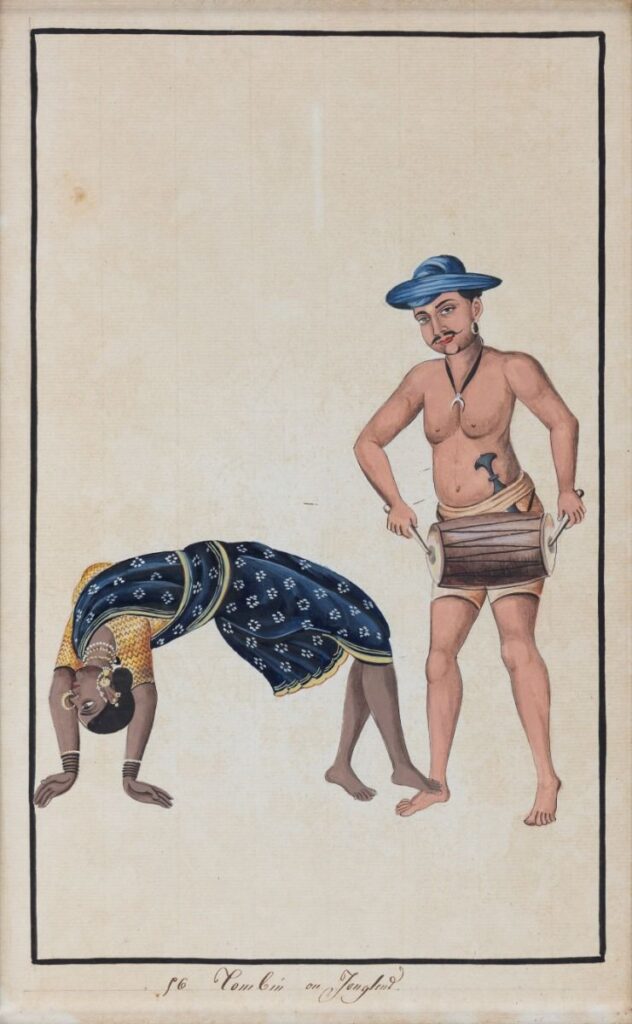
These paintings pulse with life, precision, and intimacy. Birds, flowers, noblemen, festivals — all rendered with astonishing detail in gouache and watercolor. It is a visual archive of everyday beauty, tinged with power, trade, and cultural exchange.
Often overlooked in Western narratives, Company paintings are where Mughal refinement meets European curiosity, producing a hybrid aesthetic that is delicate, observational, and quietly subversive.
A rare and refined glimpse into India’s artistic pluralism and a reminder that history is always more textured than we assume.
JAPAN
Canaletto and the Splendor of Venice
Yamaguchi Prefectural Art Museum. Until June 22, 2025
If you find yourself in Japan this June, basking in the soft glow of East Asian aesthetics, but suddenly crave a cool breeze of European clarity, we know just where to send you.
The Yamaguchi Prefectural Art Museum hosts a luminous exhibition on Canaletto and the Splendor of Venice, with works on loan from the Bowes Museum and the National Museum of Wales.
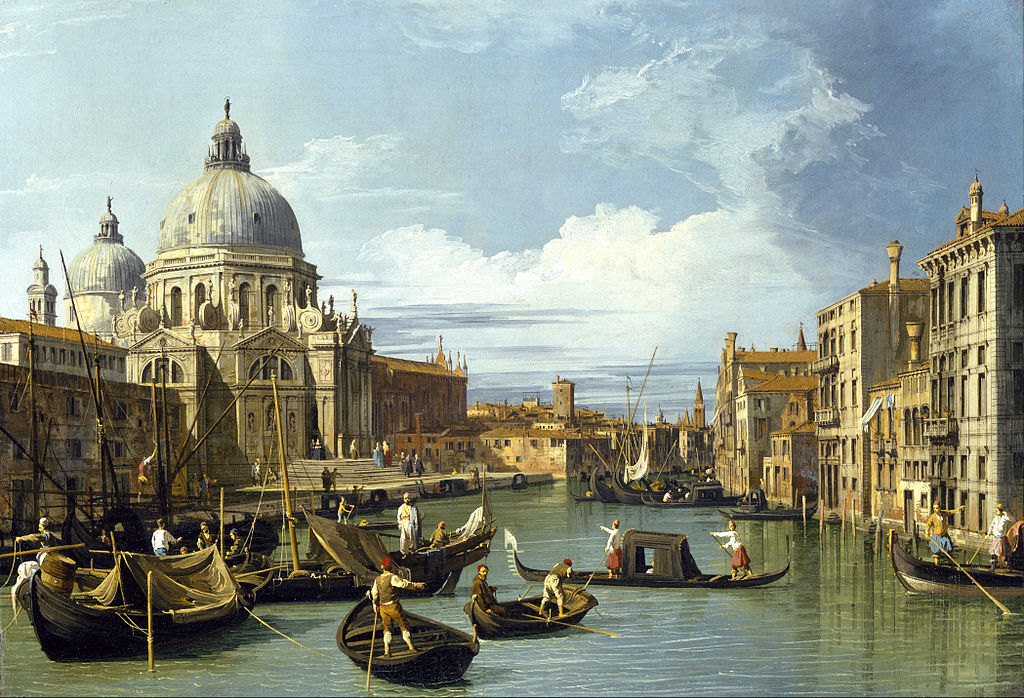
Giovanni Antonio Canal was born in Venice in 1697, he was nicknamed “Canaletto” (little Canal) to distinguish him from his father, Bernardo Canal, a decorative painter. After assisting his father, he struck out on his own around 1720 and rose to fame for his sun-drenched vistas of Venice — crisp, architectural, and shimmering with life.
Here, Canaletto’s meticulous vedute are paired with works by Monet and other European artists who later captured Venice through the dreamy lens of Impressionism. It’s an East-West conversation that spans centuries and light.
Bonus: Yamaguchi Prefecture itself is worth lingering in. While you’re there, visit Ruriko-ji Temple with its five-story pagoda, or stroll the serene Kozan Park. Culture, serenity, and a visual postcard from Venice — all in one go.
The UNITED STATES
The Sense of Beauty
Meadows Museum, Dallas. Until June 22, 2025
Let us start with Flaming June — a painting so radiant it should be on every summer art pilgrimage list. Bathed in sunlight and draped in translucent orange, this sleeping beauty appears to glow from within. Do not let the serenity deceive you: nestled beside her elbow lies a sprig of poisonous oleander, a chilling reminder that beauty, however divine, is never far from decay.

This masterpiece, part of the collection of the Museo de Arte de Ponce in Puerto Rico, is the crown jewel of The Sense of Beauty: Six Centuries of Painting from Museo de Arte de Ponce. The 2020 earthquakes in Puerto Rico closed the museum and opened the door for global loans. The Meadows Museum in Dallas was chosen to debut the largest of these exhibitions.
With over sixty works dating from the 16th to the 21st century, the show weaves a rich visual story about evolving perceptions of beauty, from classical ideals to modern abstraction, from religious devotion to secular delight. Drawing largely on the Ponce museum’s formidable holdings in European and Puerto Rican art, it is an elegantly choreographed dance of form, color, and philosophy.
From Pre-Raphaelite muses to dramatic landscapes and contemplative still lifes, this is a show that proves beauty is not a fixed ideal; it’s a moving target across time, place, and culture. And yes, it might just change the way you look at the world.
Catch it. Your sense of beauty will thank you.
Venice and the Ottoman Empire
Frist Art Museum, Nashville. Until September 1, 2025
When East met West across the Adriatic, the result was not just war or diplomacy; it was art. Venice and the Ottoman Empire explores this fascinating intersection, tracing how two great powers of the early modern world influenced each other through painting, textiles, ceramics, and decorative arts.
This touring exhibition has already captivated audiences at major institutions, and now makes one of its final stops at the Frist Art Museum. The story here is one of mutual curiosity and aesthetic entanglement. Venice, with its merchants and painters, was deeply enmeshed in the cultural fabric of the Ottoman world, and vice versa.
Expect everything from luxurious Ottoman robes to Venetian depictions of Istanbul’s skyline, from diplomatic gifts to hybrid masterpieces that speak both languages, artistically and politically. There are even recently excavated items from a 16th-century Venetian shipwreck discovered in the Mediterranean, fully loaded with goods destined for the Ottoman court and markets.
This is a show about looking, borrowing, and reimagining across boundaries.
Van Gogh: The Roulin Family Portraits
Museum of Fine Arts, Boston. Until September 7, 2025
In just a decade of painting, Van Gogh produced around 900 works — a staggering output from a life both brief and burning. If that does not feel astonishing, it should. And among those paintings, few subjects appear as tender and personal as the Roulin family.
This exhibition reunites, for the first time, the full suite of portraits Van Gogh made of his postman friend Joseph Roulin and his family, including his wife Augustine and their three children. These are not just formal likenesses. They are emotional testaments to connection, routine, and the small comforts of human companionship, all filtered through Van Gogh’s electric brushwork and searing palette.
During his stay in Arles in the late 1880s, Van Gogh painted six portraits of Joseph Roulin himself, a gesture of profound friendship and admiration. Roulin had been one of the few people to stand by the artist during his mental health crisis, including the infamous incident when Van Gogh cut off a portion of his ear. Across these portraits, one can trace Van Gogh’s evolving experiments with color, texture, and stylistic intensity.
The Museum of Fine Arts, Boston, brings together works from collections across the globe, including the Van Gogh Museum, the Metropolitan Museum of Art, and the Musée d’Orsay, to create a moving tribute to an unlikely muse: a postal worker, his wife, and their children, seen through the eyes of a genius.
***
So maybe June did not give us fireworks. But it gave us tenderness, enchantment, strangeness, and grace. And honestly? That is a pretty good deal.
Wherever your travels take you, whether it is the moody salons of Chantilly, a gallery in New Delhi, or a sun-soaked corner of Florence, let June be the month you look twice. Even sleepy seasons have their magic.
Exhibition calendar
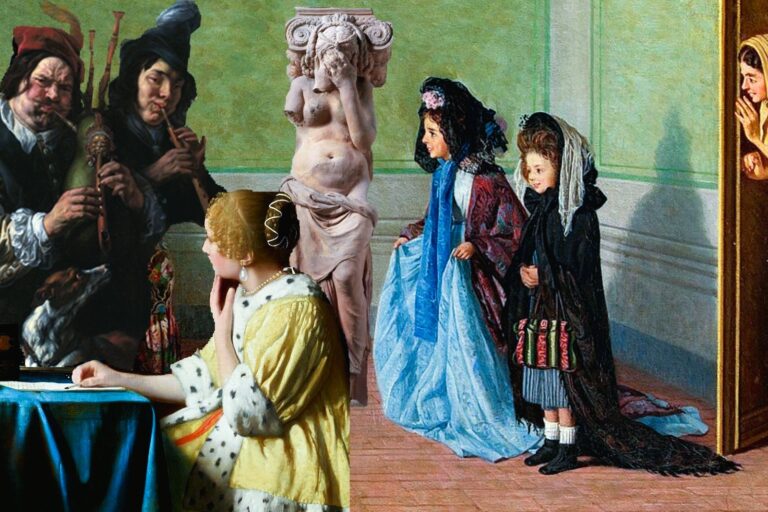
21 Aug 2025
Letters, Games, and Saint Fools: The Art Exhibitions of August 2025
August is usually a sleepy month in the art world. Museums are busy plotting…
Art news
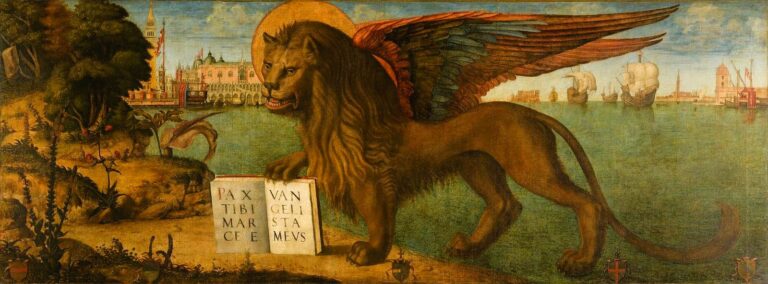
28 Aug 2025
Vittore Carpaccio’s Lion of Saint Mark: Venice’s Symbol in the Doge’s Palace
In Venice, the Doge’s Palace stood as the stage of a thousand-year republic. Its…
















